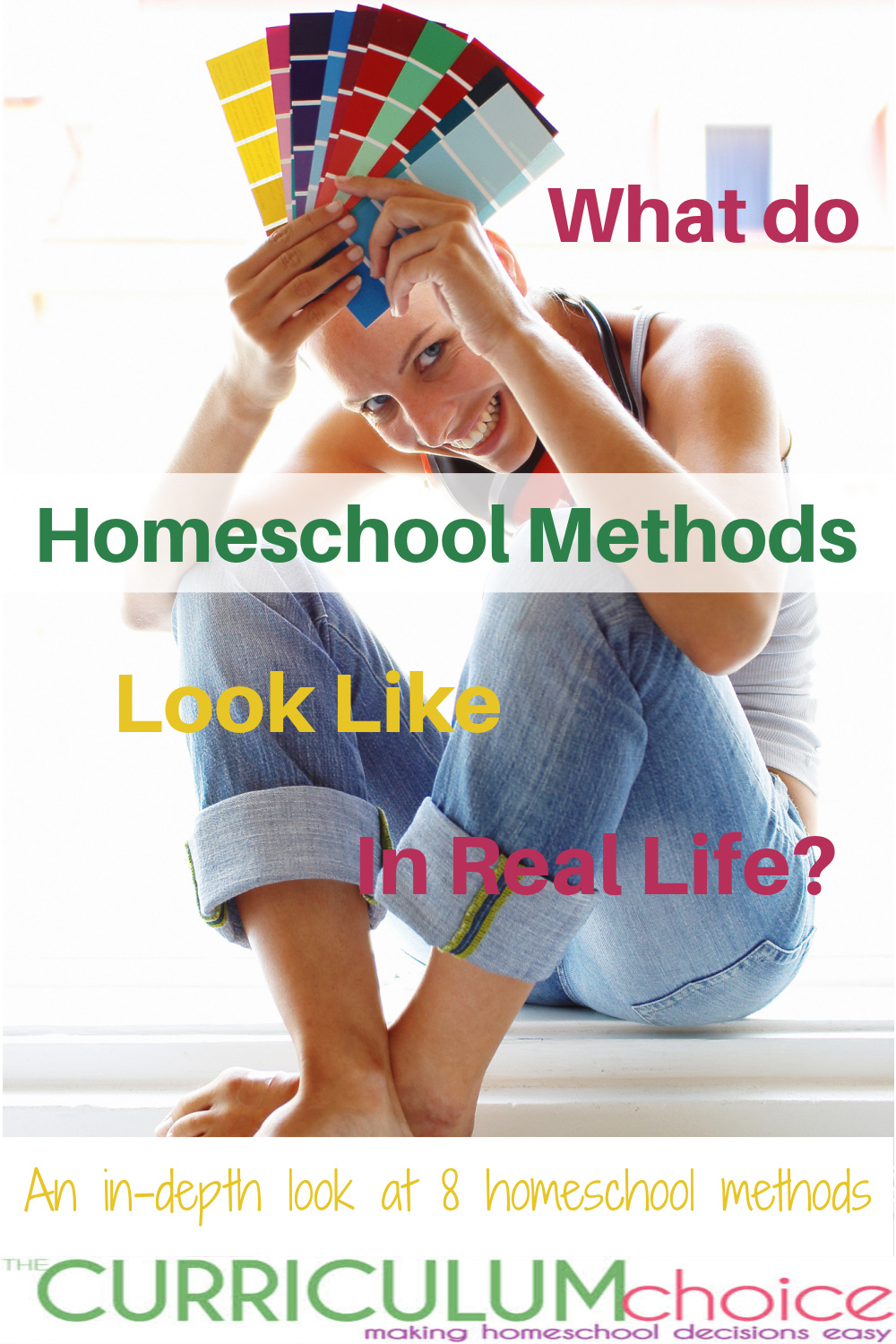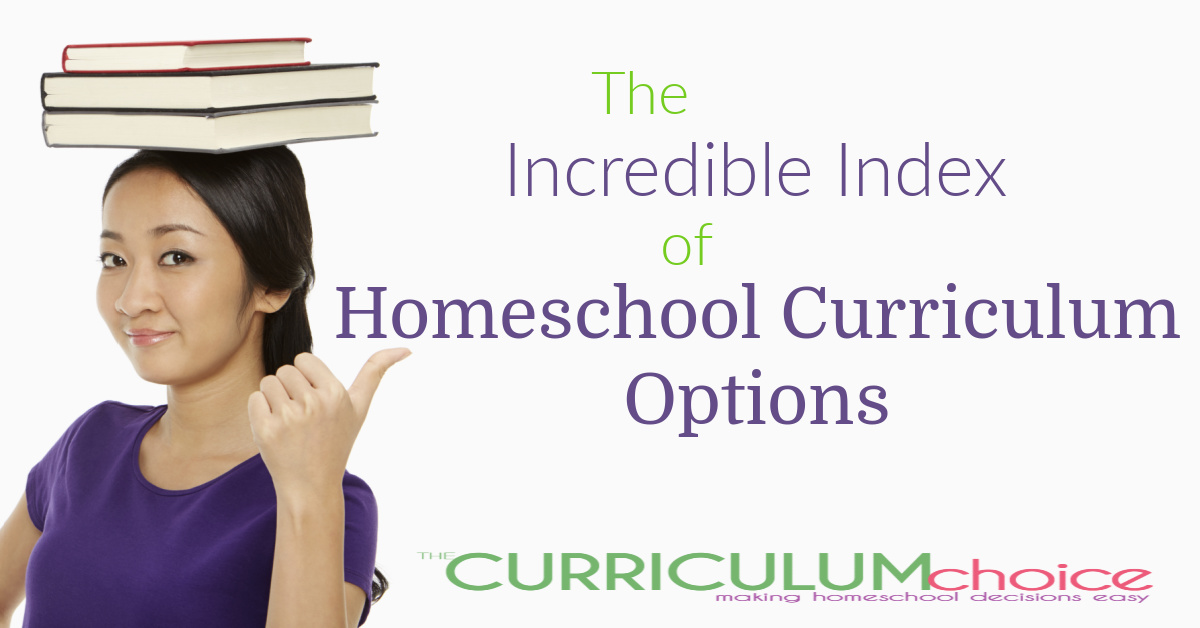Homeschooling does not fit into one box. In fact, I’d be willing to say that no two homeschools look alike. In this series I am going to dive deep into the major homeschool methods.
What are they?
How do they work in daily life?
Where can I find resources for each homeschool method?
These are the questions I will answer, to offer you insight and practical help for choosing and implementing a specific homeschool method in your home.

Homeschool Methods Ebb and Flow
Before we get into the nitty gritty of the specific methods, I want to tell you a little bit about our story to demonstrate how needs, and thus methods, can change throughout your time homeschooling.
There are so many ways to homeschool. You could have two people using the same method, the same resources even, and their homeschools would still look different. The method you choose will depend a lot not only on the needs of your children, but you as well. In order to create a productive learning environment you need to be able to facilitate the learning for your children.
When I started I had a newborn, a toddler, and a second grader. I had pulled my oldest from school because it wasn’t working for her. I WAS TERRIFIED! Homeschooling was not even on my radar, and I really only knew one person who homeschooled their children. Because I was so unsure, and so used to the public school way of schooling, I recreated much of it at home.
I had calendar charts, textbooks, and a very rigid schedule. And when I say textbooks, I mean public school textbooks, not even homeschool specific curriculum.
I lasted until October.
Something had to give. I hated the science textbook. It was not nearly engaging or in depth enough. Stress and worry set in. I had already listed my curriculum per the NY State Homeschool Regulations. How could I switch mid year? Not only could I switch mid year, but I did! I used the textbook for the topics we were to cover, and then found more engaging and enriching activities to add.
We slowly moved to a more classical approach to homeschooling. One where the memorization of basic facts (the Grammar Stage) became the foundation for learning. Susan Wise Bauer’s The Well Trained Mind sat on my nightstand, along with a notebook for years. I learned so many techniques, and used so many of the resources shared in that book!
Throughout my many years of homeschooling 3 kids (and now helping with one grandchild) my style has ebbed and flowed for reasons just like the one above. My youngest was mostly unschooled for the early years. Whatever she was excited about we followed. That is how I started creating unit studies. I would gather resources, books, videos, lapbooks, and compile them together for her, ie. a unit study!
Now I would say we are eclectic homeschoolers, meaning that I like to incorporate several different styles depending on the subject. For example, I tend to stick to more traditional methods for core subjects like math and English. But I also like to think out of the box for things like science, literature, and history. We also enjoy blending in unit studies wherever they might fit in. I also use a 4 Day Homeschool Week instead of doing formal schooling the traditional 5 days a week. It has afforded us so much more breathing space in our lives. Room for more down time, room for catch up days, room to not stress when someone is sick or when we want to go on vacation.
Homeschool Methods
In this series I will focus on each of these 8 major homeschool methods separately, supplying you with a host of amazing resources, not only from here at The Curriculum Choice, but from our writers, and even what our writers have used and recommend themselves! So stay tuned each month as I dive into a new method!
Charlotte Mason
“The Charlotte Mason method is based on Charlotte’s firm belief that the child is a person and we must educate that whole person, not just his mind. So a Charlotte Mason education is three-pronged: in her words, “Education is an Atmosphere, a Discipline, a Life.” ~ Simply Charlotte Mason
When I think Charlotte Mason the first thing I think of is the use of living books rather than textbooks. Living books are usually written in narrative or story form by one author who has a passion for his topic. A living book makes the subject “come alive.”
The second thing that comes to mind is nature study. She believed in children spending time outside, learning the ways of nature firsthand.
In a nutshell, instead of having children memorize names and dates to cram for tests, you would read interesting and exciting literature to paint a mental picture that sticks with them…encouraging a love of learning.
==>> Click here for our Charlotte Mason Homeschool Guide <<==
Classical
The Classical Education approach, also called “The Socratic Method” is based on the Trivium, a method of teaching children according to the phases of a child’s cognitive development (concrete, analytical, and abstract thinking).
The 3 Stages of a Classical Education are:
The Grammar Stage (ages 6-10) focuses on absorbing information and memorizing the rules of phonics, spelling, grammar, foreign language, history, science, math, etc.
The Dialectic Stage (ages 10–12) emphasizes logical discussion, debate, drawing correct conclusions, algebra, thesis writing, and determining the why’s behind the information.
The Rhetoric Stage (ages 13–18) continues the systematic, rigorous studies and seeks to develop a clear, forceful, and persuasive use of language.
==>> Click here for our Guide to Classical Homeschooling <<==
Digital/Online/Virtual
With the times we are living through right now this method of homeschooling has become more prevalent. I am amazed at how many online programs have come to light in the past year!
This is a very broad category that would include things like:
- online programs
- video based programs
- live or recorded classes done virtually
- any program you can complete via the computer
==>> Click here for our Guide – Homeschooling in the Digital Age <<==
Eclectic
This is the catch all category! The one I think so many fall into. When you are an eclectic homeschooler you choose from the smorgasbord of options and pull what you like most from each thing, a blending of homeschool methods.
You might be an eclectic homeschooler if:
- You are doing a unit study on electricity, memorizing multiplication tables in math, and using a textbook for English.
- You have one child doing most of their learning via online courses, one creating their own art inspired by their love of horses, and one who is outside with their nature journal all the time.
- You started with your children in desks lined up in a row and a changeable calendar on the wall, but now you find your kids on couches, in their rooms, at the kitchen table, in the backyard, etc. doing their schoolwork.
==>> Click here for You Might Be An Eclectic Homeschooler If… <<==
Montessori
The Montessori method of education was created by Maria Montessori in the early 1900s. This method is structured, but child-led. This homeschooling style helps children to learn problem-solving techniques, patience, self-discipline, and compassion for others and the environment. Often, a parent’s role in the Montessori style is to provide more guidance than strict leadership and a set program.
Major things to know:
- used primarily in the birth – age 6 and early elementary years
- child-led
- encourages independence
- children take an active part in daily life
- very hands on
- year round
- designated space – making sure that all furniture, materials, toys, and tools are child-sized, uncluttered, and easily accessible
==>> Click here for more on The Montessori Homeschool Method <<==
School at Home
Sometimes termed, “traditional homeschooling”, School at Home typically looks more like what you grew up with in the public school classroom.
School at Home will typically include:
- textbooks and workbooks for each school subject
- following a lesson plan or schedule for the days/weeks
- implementing a more typical grading system
==>> Click here to learn more about the School at Home Method <<==
Unit Studies
Unit Studies typically encompass all the scholastic subjects through the study of one topic, although they can be focused to one specific subject as well.
Simply put, a unit study is any topic that you focus on for an extended period of time in your homeschool. During the “unit”, you make an effort to incorporate every subject you can, so that you can build your entire lesson plan around that single thematic topic.
For example:
- you could develop your child’s recent rock collecting interest into a unit study by incorporating or covering subject related literature, math, geography, history, art, and English/Language arts by requiring a report (writing/grammar) or speech
- or you could follow your child down her bee obsessed rabbit hole and find every resource on bees (books, videos, activities, worksheets, etc.) and then fill in gaps like math or history with an added resource
Unit studies typically take advantage of hands-on activities, field trips, and other forms of investigation.
==>> Click here for Everything You Need to Get Started with Homeschooling Unit Studies <<==
Unschooling
The term “unschooling” was coined in the 1970s and used by educator John Holt. Sometimes referred to as “child-led learning,” or “delight-directed learning,” the unschooling approach rejects the notion that children must be taught how to learn, instead favoring a style where resources are provided based on the child’s interests.
Unlike school, or more traditional types of home education, there’s:
- no curriculum
- no imposed learning
- no testing
The children set the agenda and pace; the aim is to learn through living.
==>> Click here to learn more about Unschooling <<==
Need help finding your homeschool style?
Then stay tuned and follow along as we explore each of these styles more in depth!
Until then check out some of these homeschool methods related articles:
- Homeschool Unit Studies
- 101 Top Picks for Homeschool Curriculum
- Charlotte Mason Guides
- The Well Trained Mind Book Review
- Homeschool Record Keeping
You might also like our Ultimate Guides Series:


Leave a Reply